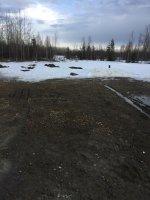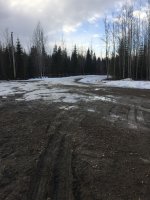summit151
Bronze Member
Hey guys. I have another question regarding gravel issues. Since you guys were so helpful on my previous post. So I am fairly young I am 23 so I don't have much knowledge about this stuff or experience. I built a acreage about 3 years ago and built a large gravel yard. I live in Alberta Canada so we get a lot of snow and rain. I built the driveway and yard way out of clay and packed that down and then installed a couple inches of 1 1/4" crushed gravel which contained sand to help lock it in place. So each year I add more and more gravel to both the drive way and yard way. It does keep getting better and better each year but it is muddy in the spring. I'm just wondering if I should keep adding more and more gravel to create a base or what else to do? It is sloped well for the water to run off


 and yes I removed all the top soil. I actually dug a dug out in my back field and used that as a fill to get everything above the surroundings
and yes I removed all the top soil. I actually dug a dug out in my back field and used that as a fill to get everything above the surroundings